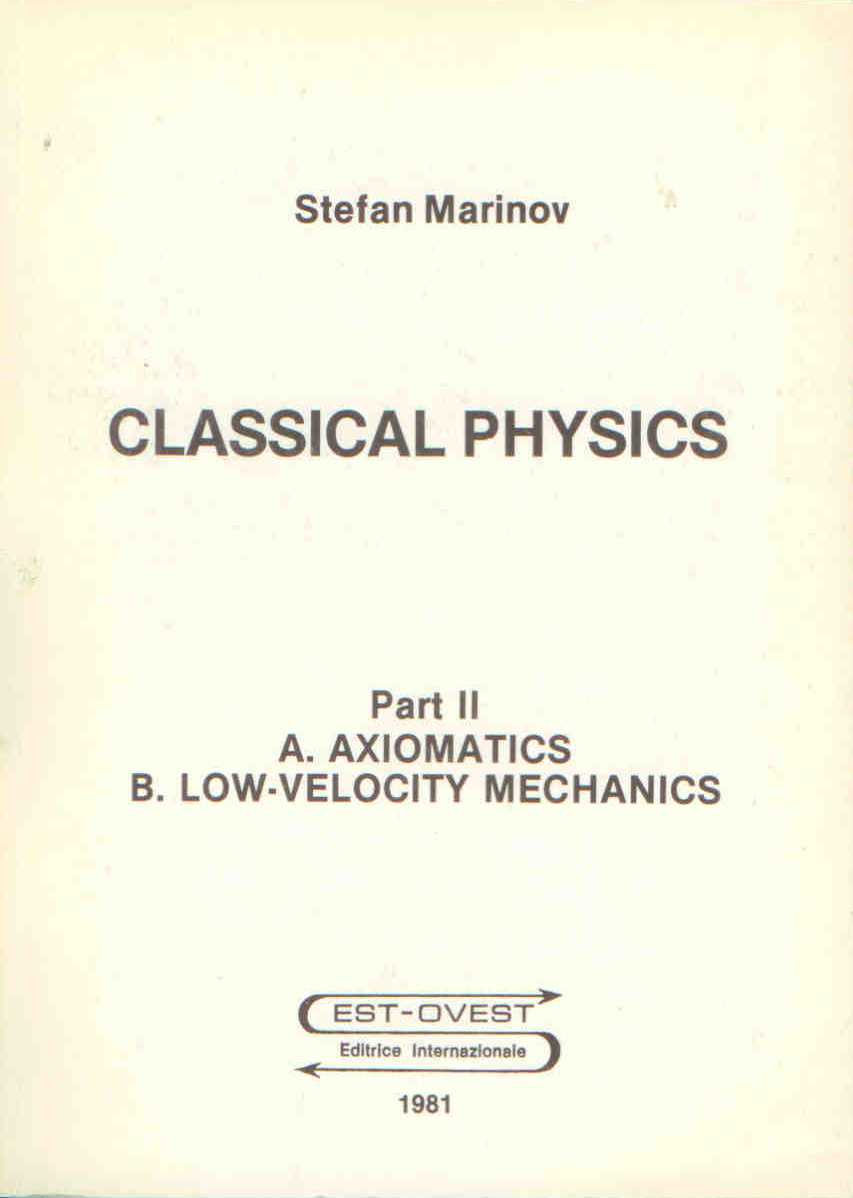Classical Physics, Part II: Axiomatics & Low-Velocity Mechanics
AXIOMATICS and LOW-VELOCITY MECHANICS represent Part IIA and Part IIB of Marinov?s encyclopaedic CLASSICAL PHYSICS, constructed exclusively on the ten axioms introduced in Part IIA. Those are the axioms for space, time, and energy, the axioms for the different kinds of energy (space energy, time energy, and space-time energy), the axiom for the conservation of energy, and the high-velocity axiom. Marinov builds the whole mathematical apparatus of classical physics on a single equation ? the law of energy conservation. All other equations in classical physics, obtained uniquely by the help of simple mathematical speculations, are logical results from this single axiomatical equation. However, with his "small but many beat one big" experiment, described in the preface to Part I, Marinov has registered a violation in the law of energy conservation. This experiment is the first one in history which can be treated at the same time in the domain of classical physics and in the domain of statistical physics. It is based on the "transfer" of momentum and energy "through" extended bodies and on the fact that for massive particles (particles moving with a velocity lower than c) momentum is not proportional to kinetic energy, because the change of the space momentum is a low-velocity phenomenon, while the change of the momentum (rest energy plus kinetic energy divided by c) is a high-velocity phenomenon. As Marinov writes in the preface: "The aim of writing CLASSICAL PHYSICS is the presentation of the report on my "small but many beat one big" experiment. All five volumes can be considered as an appendix to this report.



